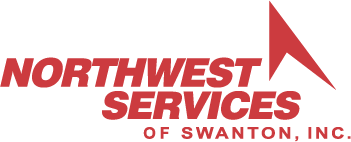
You might not think a lot about how your air conditioner works, but it relies on refrigerant to keep your home cold. This refrigerant is subject to environmental rules, because of the chemicals it contains.
Based on when your air conditioner was put in, it may require R-22, R-410A or R-32 refrigerant. We’ll go over the differences and which air conditioner refrigerants are being phased out in Swanton, plus how these phaseouts affect you.
What’s R-22 and Why Is It No Longer Being Made?
If your air conditioner was put in before 2010, it probably uses Freon®. You can learn if your air conditioner uses it by calling us at 419-548-5017. You can also examine the name plate on your air conditioner condenser, which is found outside your residence. This sticker will include info on what type of refrigerant your AC uses.
Freon, which is also known as R-22, includes chlorine. Scientists consider this chemical to be bad for the earth’s ozone layer and one that contributes to global warming. The Environmental Protection Agency, which manages refrigerants in the United States, outlawed its production and import in January 2020.
I Use an Air Conditioner with R-22. Do I Need to Get a New One?
It varies. If your air conditioning is running as designed, you can continue to run it. With regular air conditioner maintenance, you can expect your AC to run around 15–20 years. However, the Department of Energy notes that removing a 10-year-old air conditioner could save you 20–40% on summertime cooling expenses!
If you don’t get a new air conditioner, it may cause difficulties if you need air conditioning repair in the future, specifically for refrigerant. Repairs can be more expensive, as only reduced levels of recycled and reclaimed R-22 is accessible.
With the end of R-22, a lot of new air conditioners now rely on Puron®. Also referred to as R-410A, this refrigerant was created to keep the ozone layer healthy. Since it needs a varying pressure level, it doesn’t match air conditioners that use R-22 for cooling.
However, Puron still has the potential to create global warming. Because of that, it could also sometime be phased out. Although it hasn’t been communicated yet for residential air conditioners, it’s expected sometime this decade.
What Refrigerant Will Take the Place of R-410A?
In preparation of the end, some manufacturers have begun using R-32 in new air conditioners. This refrigerant ranks low for global warming possibility—around one-third less than R-410A. And it also lowers energy expenditure by about 10%, according to the Intergovernmental Panel on Climate Change’s Fourth Assessment Report. That’s savings that may be forwarded on to you through your energy costs.
Northwest Services Can Assist with All Your Air Conditioning Needs
In summary, the changes to air conditioner refrigerant probably won’t affect you very much until you require repairs. But as we discussed beforehand, refrigerant repairs may be pricier because of the restricted amounts available.
Aside from that, your air conditioner usually stops working at the worst time, often on the warmest day when we’re experiencing a lot of other requests for AC repair.
If your air conditioner requires an outdated refrigerant or is more than 15 years old, we suggest upgrading to a new, energy-efficient air conditioner. This ensures a trouble-free summer and can even reduce your cooling expenses, especially if you select an ENERGY STAR®-rated air conditioner. Plus, Northwest Services offers many financing programs to make your new air conditioner fit your budget. Contact us at 419-548-5017 to begin right away with a free estimate.
